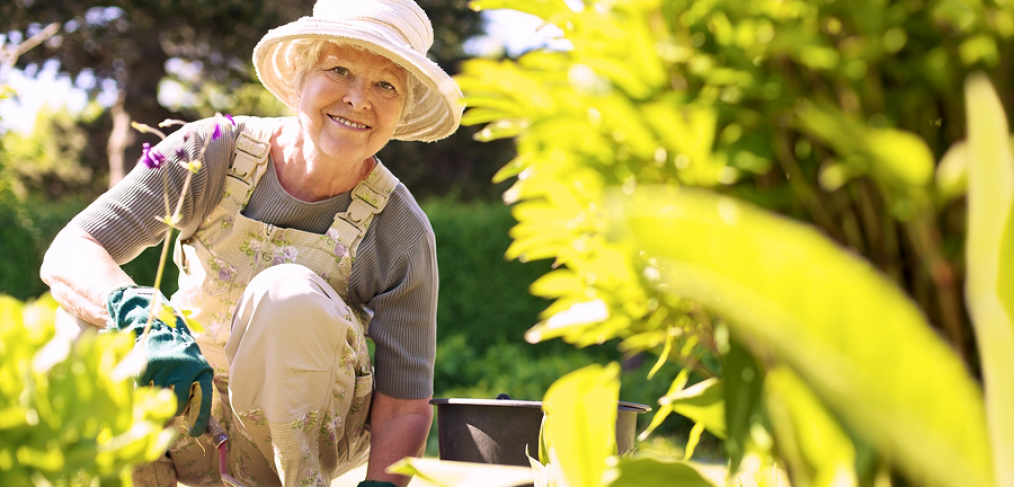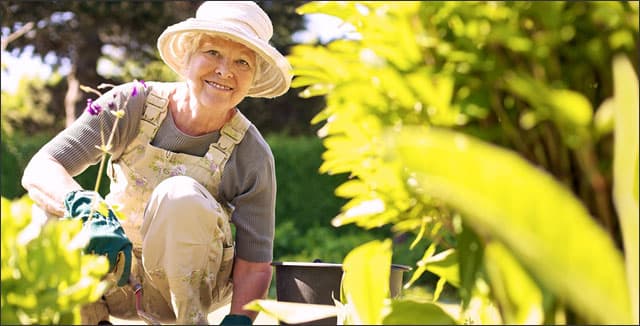
Natural Healing Through Horticultural Therapy

Would you like to start living your best life right now?
Would you like this happy life to be long and healthy?
Do you or a loved one suffer from a mental health disorder or an addiction?
The answer to all of these questions, surprisingly, lies in the same place. People have known it for centuries. The practice of healing through plants has found a scientific basis in the practice of horticultural therapy.
People everywhere are experiencing healing from trauma, improved cognitive function, and increased joy and health benefits from using this therapy in their lives.
Nature Therapy Through The Ages
Records of people using enclosed gardens in a hospital setting go back as far as the Middle Ages, so the idea that nature has healing properties is not new.
It was common for doctors to prescribe country or seaside air, or regular bathing in natural hot springs in times past for a wide range of diseases.
The term “forest bathing” has become popular in recent years as a way to describe immersing oneself in nature to relieve stress.
Dr. Benjamin Rush, who signed the Declaration of Independence, is regarded as one of the founders of American Psychiatry. He was the first person to document the mental and physical health benefits of “digging in a garden.”
However, horticultural therapy was really born after World War I. During that time; many veterans came back to their homes suffering from what we now know as Post Traumatic Stress Disorder (PTSD), which this therapy was used successfully to treat.
It was expanded further in veteran treatment in the 1940s and 50s as it gained wider acceptance.
In 1973, the American Horticultural Therapy Association (AHTA) was founded, and it continues its work to this day. The goal of the AHTA is to further educate the public about the importance of this therapy when used by trained practitioners.
What Is Horticultural Therapy?
The foundation for horticultural therapy is surprisingly scientific. While it can tend to sound fluffy and not serious, neuropsychology and behavior epigenetics research would suggest that our bodies heal better through relational experiences and direct contact with nature.
This direct contact with nature through repetitive activities has shaped human neurology.
We are programmed to find meaning, beauty, curiosity, and spiritual exploration in the context of nature, and science is just now catching on to that reality.
While simply being in nature or adding gardening to your everyday life can yield many positive benefits for anyone, horticultural therapy is distinct from gardening or “forest bathing” because horticultural therapists are trained professionals.
Therapists receive extensive education and training in the fields of horticulture and human science and are trained in specific therapeutic practices.
Since AHTA published its first Position Paper defining Horticultural Therapy in 1997, it has continued to work to define Horticultural Therapy and establish it as its own practice.
Moreover, there are two program types to support the role of a horticultural therapist: Horticultural Therapy and Therapeutic Horticulture.
You may encounter either one as part of a rehabilitation process. However, horticultural therapy is an active process which occurs in the context of an established treatment plan where the process itself is considered the therapeutic activity rather than the end product” according to the AHTA.
There is a distinction between this therapy and using plant-related activities to enhance your life or path to healing.
Horticultural therapy is gardening. However, it is much more. While it may look like digging in the dirt or planting, watering and tending plants, these techniques are proven to help with:
- Memory loss
- Cognitive abilities
- Task initiation
- Language skills
- Socialization
- Independence
- Problem-solving
- Muscle strength
- Coordination
- Balance
- Endurance
Therapeutic Gardens
The other important element in horticultural therapy is the use of therapeutic gardens.
According to the AHTA website, “A therapeutic garden is a plant-dominated environment purposefully designed to facilitate interaction with the healing elements of nature.”
Therapeutic gardens are more in demand than ever and are designed for passive and active use, depending on the needs of the patients.
These gardens often have accessible entrances and paths, raised planting beds and containers, and a wide variety of colors, textures, and fragrances to make it a sensory experience.
In addition, therapeutic gardens can focus on healing, enabling, rehabilitation, and restoration and can accommodate various abilities and needs.
The two are meant to work together: therapeutic gardens and trained horticultural therapists.
Although a horticultural therapist could use a natural setting not designed for therapy, a therapeutic garden will not live to its full potential without the therapist and programming to utilize the space to its full potential.
Personal Testimonies
There is one study on the effect of Japanese gardens on Alzheimer patients. It notes that patients’ short-term memory improved through horticultural therapy.
There are programs in prisons, wilderness therapy programs for teenagers, and programs at addiction recovery and mental health centers.
Tony Wright, of Roswell, Georgia, is a retired human resources manager and a recovering addict. Every morning, he sips coffee in his garden and meditates on his 12-step program before slowly walking through and tending his backyard oasis.
After being introduced to horticultural therapy at a treatment center called Skyland Trail in Atlanta, Tony has used the principles in his own practice every day.
According to Tony, he was battling alcoholism and crippling depression. His horticultural therapy practice makes him feel lighter when depression makes him feel heavy.
The difference between this and other types of therapy, for Tony, was that he was the one in charge.
In this modality, clients are in charge of the care and not the subjects. For people who are spending so much time receiving care, it’s a significant shift.
For some, like Tony, it’s life-changing.
Takeaway
Do you love nature, being outside, and getting your hands in the dirt? You could channel that love into a career.
Horticultural therapy is an emerging field. Additionally, the need for rehabilitation and recovery from addiction in this country is high and growing every year.
Gardening may become one of our best weapons against these problems.
Have you ever used gardening or nature to help yourself recover from something? Have you ever participated in a horticultural therapy program? Tell us about it in the comments!



